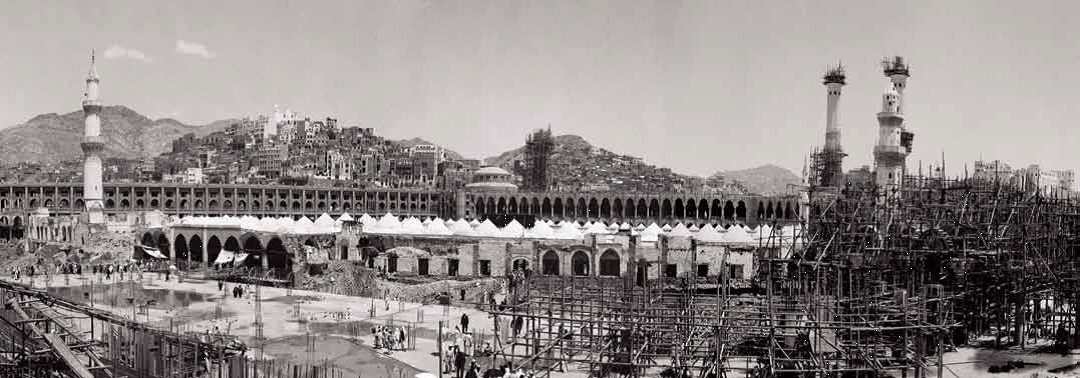The Changing Hajj in Modern Times

Pilgrims on Hajj, Abbas Hilmi II, 1909, Durham University Library.
New Technologies, New Possibilities
In the pre-modern period the time, effort and even danger involved in travelling to Makkah generally meant that the numbers attending the Hajj from across the Muslim world were relatively small.
However, first in the early modern age of steamships, and now in the late modern age of international air travel, the Hajj has become ever more accessible and affordable to Muslims worldwide.

Panoramic view of Mecca c. 1845, Nasser D. Khalili Collection.
When we went to India it was nearly two and half to three months to go to Hajj and perform and come back, that was the quickest one. A longer one was about four months, because they go in the early ship and come back in the last ship. So the ship travelling alone cost between 21 days and 14 days depending on the route the ship took. But now it’s a matter of hours.
Ever Rising Numbers

Deck of a pilgrim steamer at Jedda, F.G. Clemow, 1913.
The number of overseas pilgrims travelling to Saudi Arabia for Hajj has mushroomed since the 1950s. Before then overseas numbers rarely exceeded 100,000. Since the 1980s this number has been 1 million and rising.
By 2012 a total of about 3 million pilgrims were performing Hajj. But in 2013 the Saudi authorities cut visa quotas for each country by 20%. This was to enable a further stage in the expansion of the Grand Mosque, work which first began in 1957.
I believe the Saudi Authorities are trying their best to make Mecca the most advanced city in the world ... there’s been a massive improvement and even in terms of the Haram itself, I think in terms of the improvements they’re making – they’ve for example now announced the complete air conditioning of the whole of the Haram which is fantastic.

Pilgrims disembarking from a plane, Abdul Ghafur Sheikh, 1953.
Upgrading facilities
The huge rise in pilgrim numbers has clearly put immense pressure on the infrastructure of Makkah. Managing the Hajj is a remarkable challenge for the Saudi authorities that some British pilgrims compare to organising the Olympics in London every year.
In recent decades a number of disasters involving fires and stampedes did result in the large scale loss of human life. However, the authorities have responded by improving both capacity and safety, challenges which have to be balanced with a concern for heritage.
Over the years then we began to see that old Makkah disappear, all the old hotels were beginning to be demolished, the sukhs began to disappear from the streets and they began to accommodate them in the basement of these hotel blocks and apartment blocks they were building.

The Haram, Safou Naamani, 1963.
